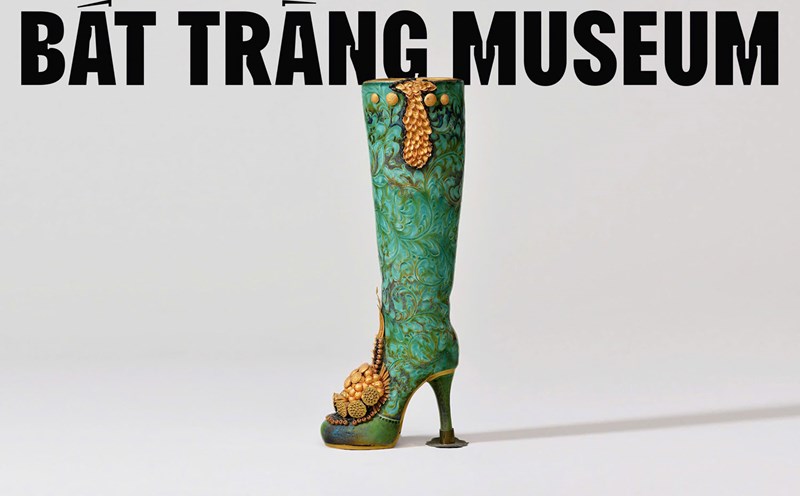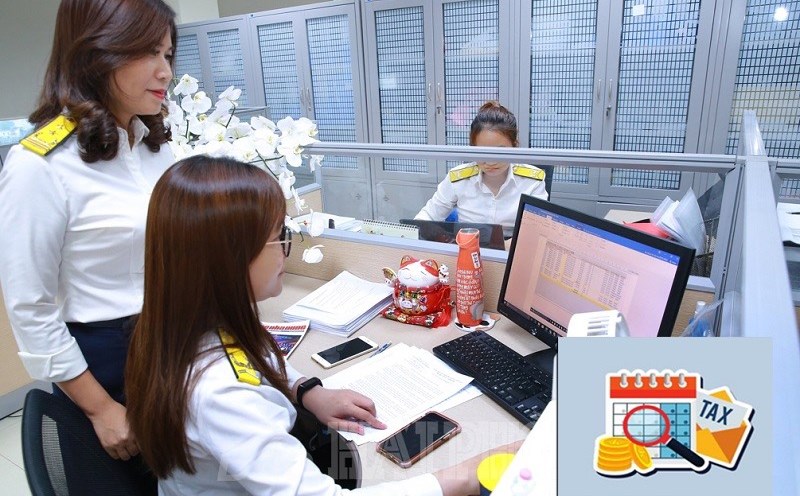The Anxiety of a Private Museum
On the first day of the Lunar New Year, I was invited by a friend to visit “a unique museum in the Doai region”, located in Phuc Duc village, Sai Son commune, Quoc Oai district (Hanoi). When mentioning Sai Son, I suddenly remembered the famous poem by Quang Dung: “When will I return to Dong Buong Can/ Go to Sai Son mountain to see the golden rice fields”. “It must be a museum… of rice fields”, I asked. “No”, my friend said, “it is much more sublime. It is a museum of paintings. One of the first private museums in Vietnam”.
So I met painter Phan Thi Ngoc My. She was born in 1948, the 15th generation descendant of the Phan Huy Ich and Phan Huy Chu families. A friend introduced: “Since she was young, she showed her talent for painting and was determined to pursue it with great determination. When she grew up, she not only painted but also always consciously preserved and collected valuable paintings and antiques, because to her, there was a whole Vietnamese culture with a strong identity. After a long enough accumulation of knowledge and collected paintings and antiques, in 2006, she established the Phan Thi Ngoc My Fine Arts Museum”.
In a fairly modern house in the middle of Phuc Duc village, just a few hundred meters from Thay Pagoda, is a real museum. The owner does not hesitate to introduce: “This is a painting by Bui Xuan Phai, that is a work by Nguyen Gia Tri, in the far corner hangs several works by Nguyen Tu Nghiem…” all of which are works by famous Vietnamese painters. Of course, all are originals.
According to regulations, museums are allowed to charge fees to maintain their operations, but up to now, artist Ngoc My’s museum is still open for free, operating for the community. When I asked about the safety and ability to preserve valuable works of art without damage, artist Phan Thi Ngoc My shared: “I dream of having a larger, safer space for the works on display. Running a museum is difficult in many ways.
In fact, in recent years, many private museums have opened, invested large amounts of capital but then suffered heavy losses. One of the effective directions for museums in general and private museums in particular is to link with tourism to attract visitors, but this activity is still weak. The reason is that the State's preferential mechanisms and policies for this type of museum are not many.
The programs of exhibitions, conferences, and art performances for the public are mostly self-funded by museums, so there are still many constraints. The current Law on Cultural Heritage recognizes the model of non-public museums. However, apart from this provision, the Law does not have any specific provisions for non-public museums.
Finding a way for private museums
In Vietnam today, there are about 70 private museums. The concept of private museums is stipulated in the 2001 Law on Cultural Heritage, until 2009 when the Law was amended to become non-public museums. This also shows that private ownership of cultural heritage is not yet recognized.
During the process of collecting opinions on the Law on Cultural Heritage (amended) this time, there were opinions that, no matter how it is defined, the artifacts in these museums are not owned by the entire people, but the ownership of these artifacts belongs to each specific individual, that is, private ownership.
In an interview with Lao Dong, Associate Professor Dr. Nguyen Van Huy - former Director of the Vietnam Museum of Ethnology, Director of the Nguyen Van Huyen Museum - emphasized that establishing a private museum is not difficult, but maintaining and developing its activities is really difficult. Many museums have withered quickly after their establishment due to a lack of professionalism.
In July 2024, at the Conference of full-time National Assembly deputies, when discussing the amendment of the Law on Cultural Heritage, Delegate Nguyen Thi Viet Nga (Hai Duong Delegation) said that, compared to the current Law on Cultural Heritage, the draft Law submitted at this conference paid more attention to private museums located in non-public museums. However, private museums have not been properly mentioned. The draft still mainly regulates public museums. The tasks of museums such as: Collecting, documenting artifacts and intangible cultural heritage of museums, inventorying artifacts, preserving museum artifacts, etc. are not really suitable for private museums, mainly aimed at public museums.
Many private museums possess extremely valuable heritages. When there is no incentive mechanism, private museums must completely finance themselves from investment sources from individuals, leading to difficulties in organizing exhibitions, preserving artifacts, and welcoming visitors. This is also a bottleneck in the development process of private museums. Therefore, many valuable collections of individuals remain just personal collections, have not yet promoted their value, and do not have the conditions to be widely displayed.
To facilitate the management and support of private museums, there should be more specific regulations in the Law on Cultural Heritage (amended). Because when the doors of private museums remain “half-closed”, it means we are wasting cultural heritage values, wasting people’s opportunities to enjoy them, and wasting valuable artifacts and works in private museums at risk of damage due to lack of resources for preservation and maintenance.
“When amending the Law on Cultural Heritage, it is necessary to have specific and practical regulations to create motivation for the development of private museums. In particular, it is necessary to have separate regulations for private museums: from conditions, procedures, establishment and operation, to preferential policies of the State. Only then can we ensure the most necessary conditions for private museums to promote their values, actively contributing to the preservation and promotion of the values of the national cultural heritage,” said Delegate Nguyen Thi Viet Nga.










